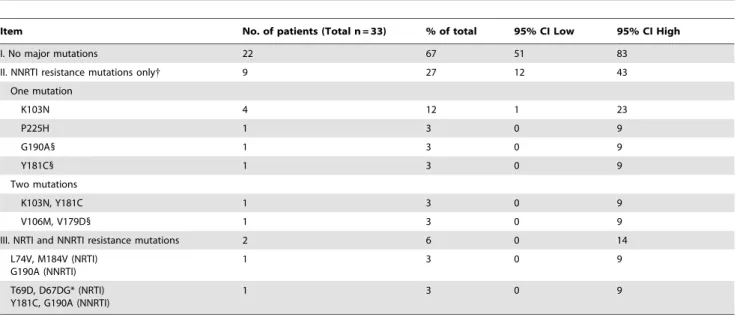Virologic failure of protease inhibitor-based second-line antiretroviral therapy without resistance in a large HIV treatment program in South Africa.
Texto
Imagem

Documentos relacionados
Factors independently associated with incidence of HIVDR were: initial treatment with a didanosine (DDI)-based regimen; receiving care at township hospital or village clinic;
Among patients with virological failure on a first-line dual NRTI plus NNRTI regimen, a higher proportion of those who received TDF and/or ABC had the non-TAMs K65R, K70EQG, L74VI,
In an effort to standardize HIVDR surveillance globally and to increase survey national representativity, the WHO has proposed a comprehensive strategy including 4 proto- cols to
KEYWORDS: Human immunodeficiency virus; Anti-retroviral treatment; Resistance mutations; Highly active antiretroviral therapy; Risk factors; Response;
Resistance mutations in protease and reverse transcriptase genes of human immunodeficiency virus type 1 isolates from patients with combination antiretroviral therapy
Absolute and cumulative prevalence of each major nucleoside (NRTI) and nonnucleoside RT inhibitor (NNRTI) drug-resistance mutation (DRM) in 4,926 individuals with virological
Prevalence of protease and reverse transcriptase drug resistance mutations over time in drug-naive human immunodeficiency virus type 1-positive indivi- duals in Rio de Janeiro,
Prevalence of Protease and Reverse Transcriptase Drug Resistance Mutations over Time in Drug-Naïve Human Immunodeficiency Virus Type 1-Positive Individuals in Rio de Janeiro,